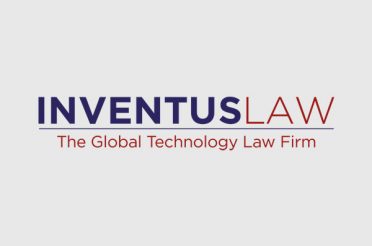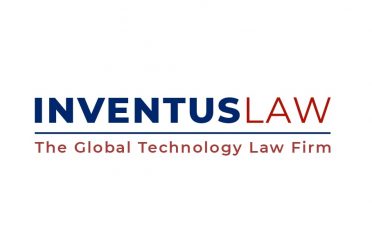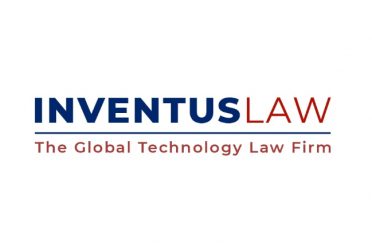Ethereum Merge Takes a Fork in the Road Towards Increased Security
By Shantanu Surpure
On September 15, 2022 an Ethereum upgrade, to what was earlier known as ETH 2.0 but now known more widely as “Merge,” successfully took place. The nature of the upgrade should make Ethereum more secure from attack. The creation of a hard fork in Ethereum, however, raises issues regarding ownership and transfer of NFTs. The launch of Merge introduces other legal issues as well.
The ETHPOW Fork and its Impact
Cryptocurrencies are networks that work by consensus, and without such consensus, “forks” occur. A “fork” means that the blockchain splits, with each forked blockchain acting as duplicate ledger up to the point of the fork and thereafter branching out to separate network.
A “hard fork” is a blockchain network upgrade, which forces all users to upgrade to the latest version of the protocol’s software in order to keep participating in the upgraded version. However, if there are enough members left in the previous version of the blockchain, two versions will simultaneously exist. This is the situation with Ethereum. (Hussey, Matt. “What are forks in cryptocurrency?” Decrypt, 18 Jan. 2019, decrypt.co/resources/forks. Accessed 17 Sept. 2022.)
Before Merge, the Ethereum mainnet was functioning as a Proof of Work (POW) network and many miners had invested significant resources toward the POW. Therefore, within hours of Merge, ETHPOW, a forked version of the mainnet went live, preserving the POW version of Ethereum albeit with certain issues in its launch relating to ETHPOW choosing a chainID (fingerprint for a specific network that help blockchains confirm the unique identity of on-chain assets) that was already in use by a BitCoin Cash testnet. (Lutz, Sander. “Ethereum Fork ETHPoW Gets Off to Rocky Start.” Decrypt, 15 Sept. 2022, decrypt.co/109884/ethereum-fork-ethpow-gets-off-to-rocky-start. Accessed 17 Sept. 2022; Kuhn, Daniel, Ethereum PoW Is Not an Ethereum Competitor,” Coin Desk, 15 Sept. 2022, coindesk.com/layer2/2022/09/15/ethereum-pow-is-not-an-ethereum-competitor/. Accessed 17 Sept. 2022.)
Network Security
Proof-of-work (“POW”) and proof of stake (“POS”) are cryptocurrency validation protocols or consensus mechanisms. With Merge, Ethereum moves from a POW model to a POS model. Merge potentially increases the security of the network. An attacker needs 51% of the blockchain’s value to take control. With Merge, increased access and reduced centralization means that there will be more users and nodes on the blockchain. This makes it harder for an attacker to co-opt more than 50% of the network, making the network more secure.
Additionally, POS allows Ethereum to precisely identify the attacker, eject them from the system, and penalize them. While with POW an attacker needed $5 billion to take over the Ethereum blockchain under the POW model, under the POS model, this is increased to $20 billion. (Cheikosman, Evin. “Ethereum Merge: what it means for the crypto-currency industry.” World Economic Forum, 14 Sept. 2022, weforum.org/agenda/2022/09/ethereum-merge-crypto-currency-sustainability/. Accessed 16 Sept. 2022.)
Hard Forks and NFTs – Legal Issues
The start of the fork raises unique questions for systems built on top of Ethereum such as non-fungible tokens (“NFTs”). This is because following the hard fork, the ETH blockchain was duplicated and every transaction prior to the fork is the same on both blockchains up to the fork.
This means that unique blockchain based tokenIDs provided to purchasers of existing NFTs would duplicate, with one version existing on each blockchain. This situation raises questions about the authenticity of these NFTs and as to i) the NFT on which block chain is authentic and rightfully owned by the NFT holder from the NFT creator; ii) which authority has the rightful authority to make this decision.
The situation becomes even more complicated when the NFT purchaser holds the ETHPOS NFT but sells the ETHPOW NFT. Legal precedent demonstrates that the determination of these questions often depends on the interpretation of the license agreement between the NFT creator and the original purchaser and that exchanges have no obligation to honor forked assets on their platforms. (Archer v. Coinbase, Inc., 53 Cal. App. 5th 266, 277; BDI Capital, LLC v. Bulbul Investments LLC, (N.D.Ga. 2020) 446 F.Supp.3d 1127, 1138.) It will be interesting to examine how this scenario plays out over the next few years.
Legal Impact on Derivative Instruments
Merge may also have an impact cryptocurrency derivative instruments. Documentation regarding cryptocurrency derivatives may capture what happens when there is a hard fork such as what occurred with Merge. However, the consequences of a hard fork may not be detailed with sufficient specificity and therefore could result in disputes as to which party or counterparty retains the results from Merge.
Many derivatives transactions utilize ISDA (International Swap and Derivatives Association) Agreements. These agreements may contain provisions regarding termination and disruption events including material changes. It is important to recognize in such agreements which party may be able to term a hard fork as an additional termination event or disruption event and understand the resulting implications and consequences. (Cieplak , Jenny, et al. “Legal Implications of the Ethereum Merge and Potential Ethereum Proof-of-Work Fork.” IFLR, 25 Aug. 2022, jdsupra.com/legalnews/legal-implications-of-the-ethereum-6442757/. Accessed 16 Sept. 2022.)
Potential Classification of ETH as a Security Under Securities Laws
The U.S. Supreme Court’s “Howey Test” states that an “investment contract” exists when there is i) the investment of money ii) in a common enterprise (iii) with a reasonable expectation of profits to be derived (iv) from the efforts of others. (SEC v. W.J. Howey Co., 328 U.S. 293 (1946).)
The “Howey Test” applies to any contract, scheme, or transaction, regardless of whether it has any of the characteristics of typical securities. If a transaction is an investment contract, then it qualifies as a security under the Securities Act of 1933 and Securities Exchange Act of 1934. In a 2018 speech, the SEC’s former Director of Corporate Finance stated that under “the Ethereum network and its decentralized structure, current offers and sales of Ether are not securities transactions.” (https://www.sec.gov/news/speech/speech-hinman-061418)
After Merge, however, anyone who owns 32 ETH can potentially establish a full validator node, join a pool of other validators and upon the validation of block, earn a reward. It could therefore be argued that a post Merge POS asset qualifies as a security as (i) validators pool their ETH in a “common enterprise”; and (ii) there is an expectation of profit derived from the efforts of others because validators will receive rewards from themselves and others validating the Ethereum network. This presents new legal issues which have not yet been settled regarding the legal status of Ethereum as a security. (Timothy, Craig. “Could Ethereum Be Classified as a Security Following the Merge?” Crypto Briefing, 26 Jul. 2022, cryptobriefing.com/could-ethereum-be-classified-security-following-the-merge/. Accessed 16 Sept. 2022.)
Proof of Work to Proof of Stake and Resulting Impact on Sustainability
Merge is timely as there is increasing focus on the environmental aspects of cryptocurrency and a need to utilize more sustainable practices.
Post Merge, Ethereum calls itself a “green blockchain” and boasts of a reduction in energy consumption “by ~99.95% when proof-of-work was swapped for proof-of-stake.” Ethereum’s move from a proof-of-work (“POW”) to a proof of stake (“POS”) model is being he as a move towards sustainability of consensus protocols. (Beekhuizen, Carl. “Ethereum’s energy usage will soon decrease by ~99.95%.” Ethereum Foundation Blog, May 18, 2021, blog.ethereum.org/2021/05/18/country-power-no-more. Accessed 16 Sept. 2022.)
POW is a mechanism utilized to regulate the creation of blocks and is the underlying algorithm that establishes the difficulty and rules for the “work” miners do. The POW consensus forces miners to solve complicated cryptographic problems in order to produce a valid block (“Mining”). The more “work” done, the longer the chain and consequently the more coins created. (George, Benedict. “What Is a Consensus Mechanism?” Coin Desk, coindesk.com/learn/what-is-a-consensus-mechanism/. Accessed 16 Sept. 2022).
POW consensus requires keeping large amounts of hardware running which is energy intensive and consumes a significant amount of power. POW consensus as it relates to Ethereum consumes the energy equivalent of a medium-sized country.
In contrast, POS does not require as much computing power and related intensive energy consumption because any user can act as a validator by using a computer to create a node. POS requires validators/stakers (the POS equivalent of miners) to lock up funds (i.e., “stake”) in a smart contract. POS validators are selected based on how much of the coin/token they stake. (Antolin, Mike. “Proof-of-Work vs. Proof-of-Stake: What Is the Difference?” Coin Desk, 23 Aug. 2022, coindesk.com/learn/proof-of-work-vs-proof-of-stake-what-is-the-difference/. Accessed 16 Sept. 2022.)
As a result, new ETH in Merge will be minted by nodes (computers) on the network staking ETH into a pool in order to secure the network and validate transactions. The POS model rewards the stake in the network over the computer power. Miners (validators in this case) will no longer have a financial incentive to utilize significant computing power on an “always on” basis and therefore dramatically reduce the network’s energy usage. (Chow, Andrew. “Why the Ethereum Merge Matters.” Time, 7 Sept. 2022, time.com/6211294/ethereum-merge-preview/. Accessed 16 Sept. 2022.)
Anticipating Widespread Benefits of Merge
Merge favors a decentralized system. Decentralization was difficult to achieve with POW as individuals or groups with access to significant computer power dominated POW mining. By reducing the required overhead for participation and cutting fees through efficiency improvements, POS assists Ethereum in distributing transactions across a wider and more diverse set of validators and users. Decentralization is a key feature of the ethos of blockchain and cryptocurrencies.
* The author appreciates the assistance of Manya Oberoi in writing this article.





